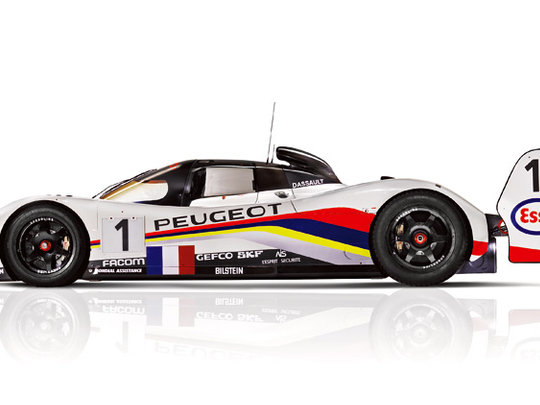
Peugeot isn't a name synonymous with excitement and performance motoring. At least, not when you look at its passenger car line-up. But, as many of you will already know, the French giant has more to it than just moving people from A to B in not much style.
It's made an impressive name for itself in the world of endurance racing, which, sadly, it quit last week to concentrate more on its commercial performance. You cannot but agree that the company has reason to be worried about its commercial performance. At the same time it's sad to see it leave Le Mans.
While hoping it will be returning in a few years' time, we're taking a look back at the car that paved the way for Peugeot's illustrious Le Mans record.
Peugeot's history at Le Mans dates way back to 1926, just a couple of years after the event was born, where it entered the fray with a 174 S, managing to hold an impressive second position until a broken windscreen pillar forced it out. It continued coming back to La Sarthe with various models over the decades but with limited success.
Apart from a few high points like the P 88 establishing a 405kph speed record at the Mulsanne straight, Peugeot's Le Mans outings failed to bring it much success. That is, until a certain 905 drove into the picture.
Having had enough of being the ‘also-rans' for decades, Peugeot was determined to make a car that would help it win the event. The best opportunity seemed to be presented by the change in rules that were to be introduced from the 1991 season. The new regulations did not permit turbochargers and engine capacity was limited to a maximum of 3.5-litres.
That gave the Peugeot engineers a clean sheet, and they responded with the completely new SA35-A1 10-cylinder engine, which had an unusual 80-degree V angle. With 40 valves, dual overhead camshafts and light alloy construction, the 650bhp V10 was mated to a six-speed manual gearbox and was fitted into a carbon-fibre monocoque designed together with Dassault, and the 905 LM was born.
It made its debut on the Magny Cours circuit in 1990. It had to pull out after 22 laps and, although the car proved to be fast in its 1991 outings, it was still not a match for leading rivals like the Jaguar XJR-14. Peugeot reworked the car and came out with the 905 Evolution 1 with a new two-tier rear wing and a full-width front wing along with the more powerful 670bhp SA35-A2 engine.
The result was immediate. Peugeot won the 1992 24 Hours of Le Mans and followed it up with a podium sweep at the following year's event as well. This was the 905's final outing, but it went out with a bang. Although Peugeot had developed a further evolution of the 905 dubbed the Evo 2, it never fielded it on the track.
Not only did the 905 give Peugeot its first wins at Le Mans, it also inspired the future direction of LMP design and even Formula 1 engine designs.











